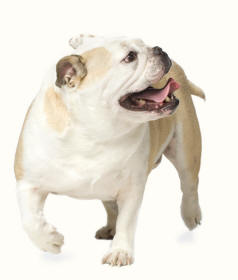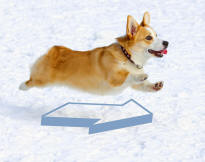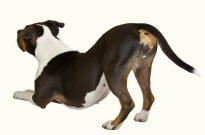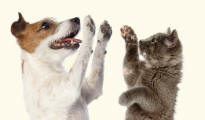Glossary

Gait
The pattern of movement of animals during (terrestrial) locomotion.
Gaits used by cats and dogs include the walk, the amble, the pace, the trot, the canter and the gallop.
Gaits used by cats and dogs include the walk, the amble, the pace, the trot, the canter and the gallop.
Fault
A characteristic of a pet that deviates from the breed standard.
Breed standards specify characteristics that are undesirable, some being disqualifying faults.
Breed standards specify characteristics that are undesirable, some being disqualifying faults.
Pace
A symmetrical, relaxed gait between the walk and the trot, in which ipsilateral limbs move in unison.
Weight is transferred from one side to the other, usually resulting in a rolling motion of the body.
This gait offers faster speed than the walk but expends less energy than a trot.
Weight is transferred from one side to the other, usually resulting in a rolling motion of the body.
This gait offers faster speed than the walk but expends less energy than a trot.
Forefoot
The foot of a cranial (anterior) limb.
Central Line
An imaginary line along the direction of travel.


Hind Foot
The foot of a caudal (anterior) limb.
Hindquarters
The hind region of the dog, from the loin.


Forequarters
The front region of an animal, excluding the head and neck.


Hock
The tarsal region or tarsal joint of the hind leg of a quadruped.
Also known (colloquially) as the heel or ankle.

Also known (colloquially) as the heel or ankle.






